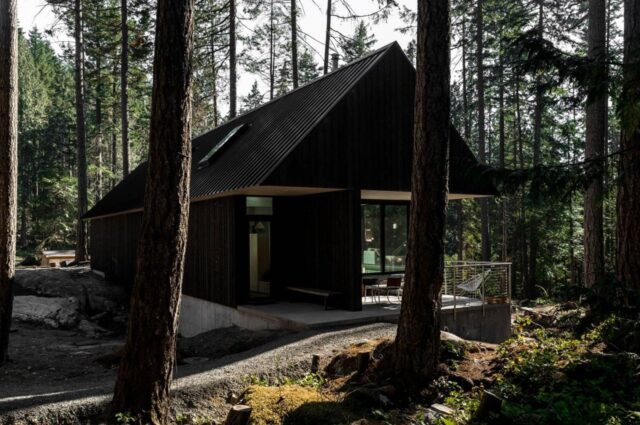
Cabins have been a relaxing and quintessential getaway option for everyone for ages galore. They’re the ultimate safe haven in the midst of nature, if you simply want to get away from your hectic city lives, and unwind. If you want a simple and minimal vacation, that lets you truly connect with nature, without any of the materialistic luxuries most of us have gotten accustomed to, then a cabin retreat is the answer for you! And, we’ve curated some beautiful and super comfortable cabins that’ll be the perfect travel destination for you. From an all-black cabin designed to support a slow-paced life to a floating cabin on a hilly landscape – these mesmerizing and surreal cabins are the ultimate retreat, you’ve been searching for!
1. Forest House

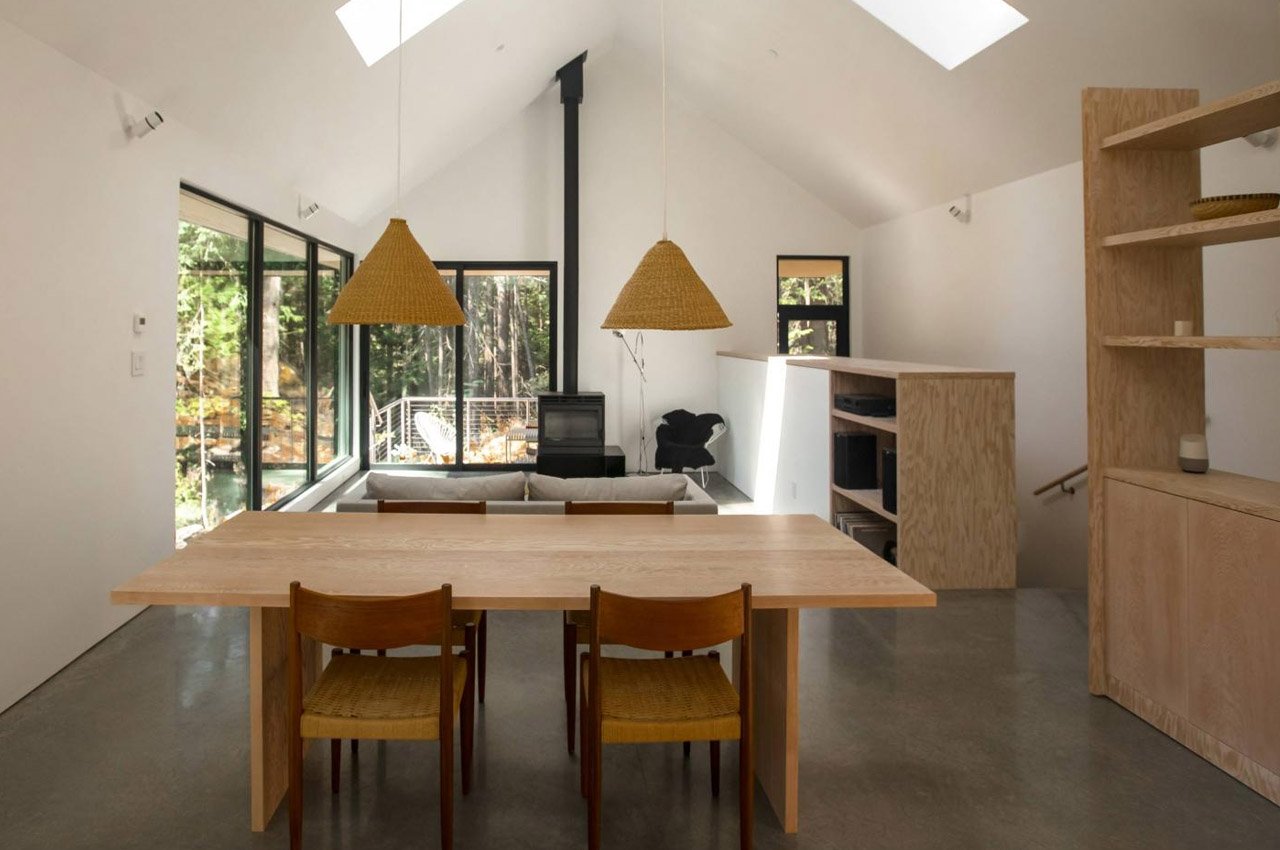
Nestled in Bowen Island, British Colombia is a beautiful cabin in the woods designed by SM Studio. Named Forest House, the cabin is deeply influenced by SM Studio’s philosophy of creating low-energy sustainable homes that are built by causing minimal disturbance to the site they are located on
Why is it noteworthy?
Vancouver-based SM Studio uplifted the traditional cabin form and gave it a more contemporary and modernized feel. Surrounded by Douglas firs, and elevated above the rocky landscape – the Forest House is definitely a far cry from the usual cabins we come across. In an attempt to reduce the impact of the home on the forest floor, SM Studio designed it like a bridge, one that connects two massive outcrops, leaving the space below quite clear, and minimizing the need to create a foundation on the rocks.
What we like
- Built while maintaining a serene relationship with the landscape around it
- Supports a more slow-paced life
What we dislike
- The home can accommodate only 3 people, hence it can be considered a small space for certain families
2. CABN.CO
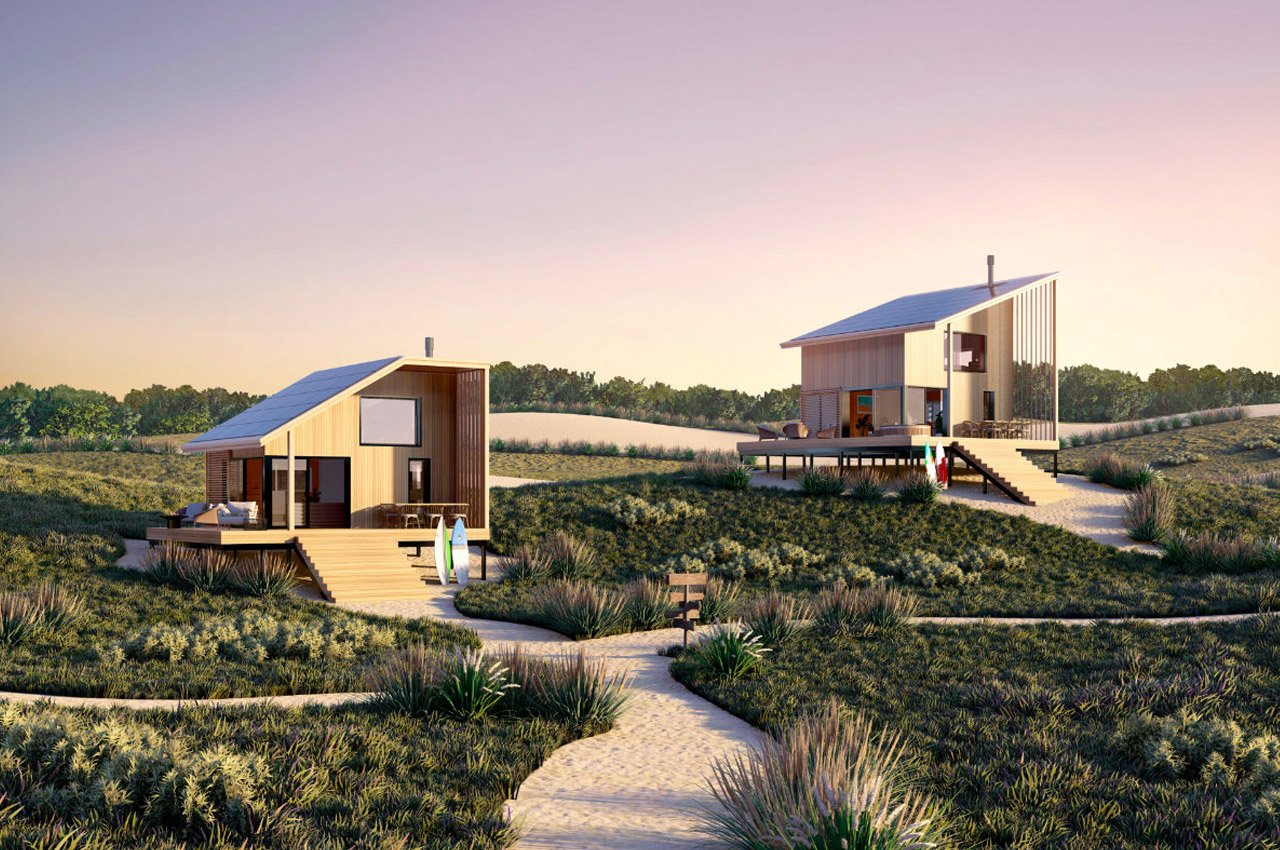
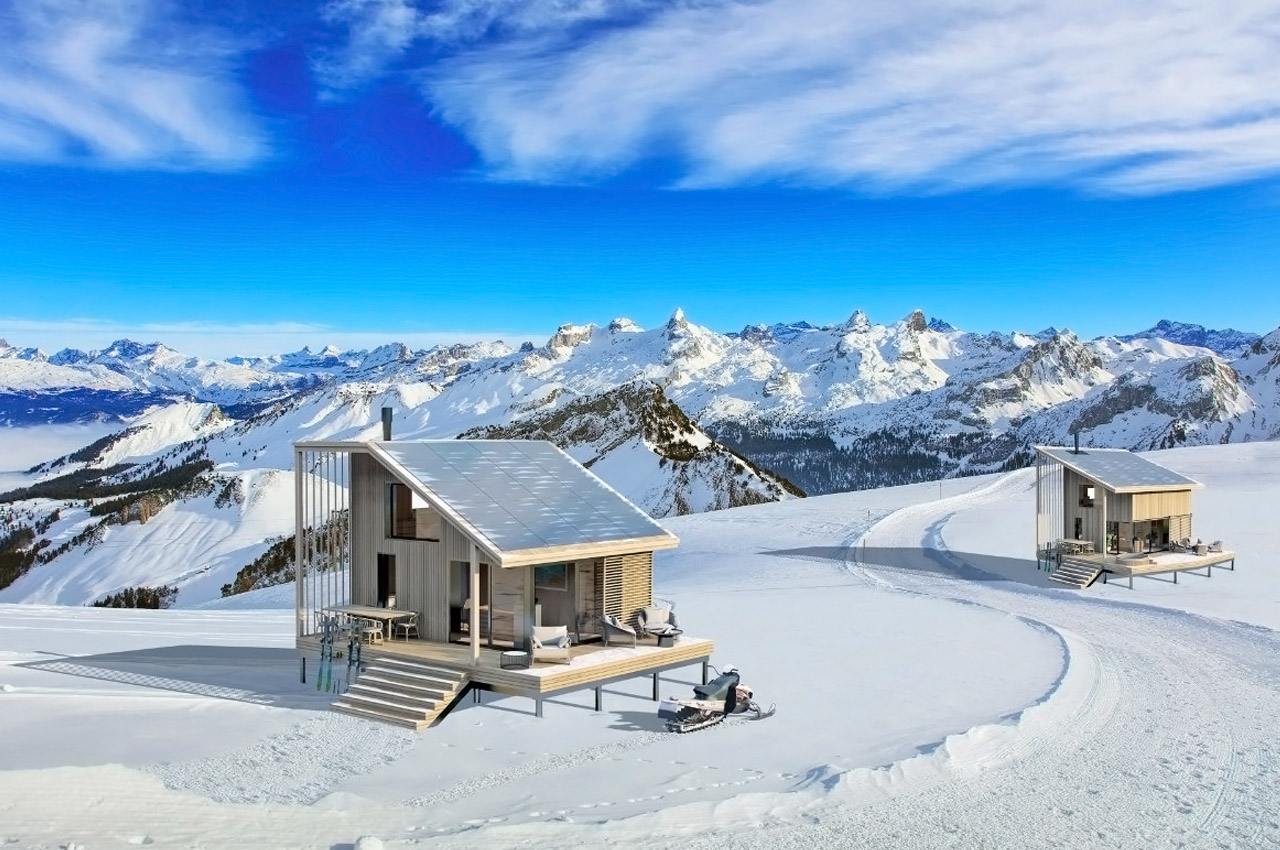
CABN.CO is on a mission to build energy-efficient and smart homes that can be placed in unique and diverse locations all over the world. These versatile cabins can be a home for you almost anywhere in the world – whether in the city or on a remote island in the Bahamas! These cabins focus heavily on solar shading and roof overhangs
Why is it noteworthy?
The homes are designed to be prefabricated, net-zero, solar powered, and biophilic.”CABN is considered a Net-positive Energy Building when applying thermal bridge free components airtight construction, electric systems with heat exchange ventilation, and on/site renewable energy generation within the building elements.” CABN.CO has also integrated the home with a biophilic design, which is further accentuated by the presence of cross-laminated timber.
What we like
- Sustainable + biophilic design
- Prefabricated structure
What we dislike
- The design does not allow for building or stacking vertically.
3. The Boundary Point Cabin


Ethereally floating above a lake in British Columbia, the Boundary Point Cabin was designed by Bohlin Cywinski Jackson as a vacation home for an extended family to gather and spend the summer every year. Perched on the hillside, over a rocky outcropping, the cabin features an intriguing wedge-like form, that allows it to harmoniously integrate with its landscape.
Why is it noteworthy?
The 2500-square foot home was constructed in 2020 on a slope marked with beautiful trees – from Douglas firs to cedars and pine trees. It features black cedar siding which enables the home to simply merge with the trees around it, creating a living space that is completely at one with its surroundings. The original cabin was quite modest and rustic and was transformed by Jackson into a contemporary cabin with floor-to-ceiling wood paneling and narrow angular slats.
What we like
- Designed to allow residents to stay connected to nature
- Interior of the home is an interesting contrast to the exterior
What we dislike
- We would love to have a glass-panelled wall to enjoy the picturesque views more easily than a traditional balcony!
4. Tind
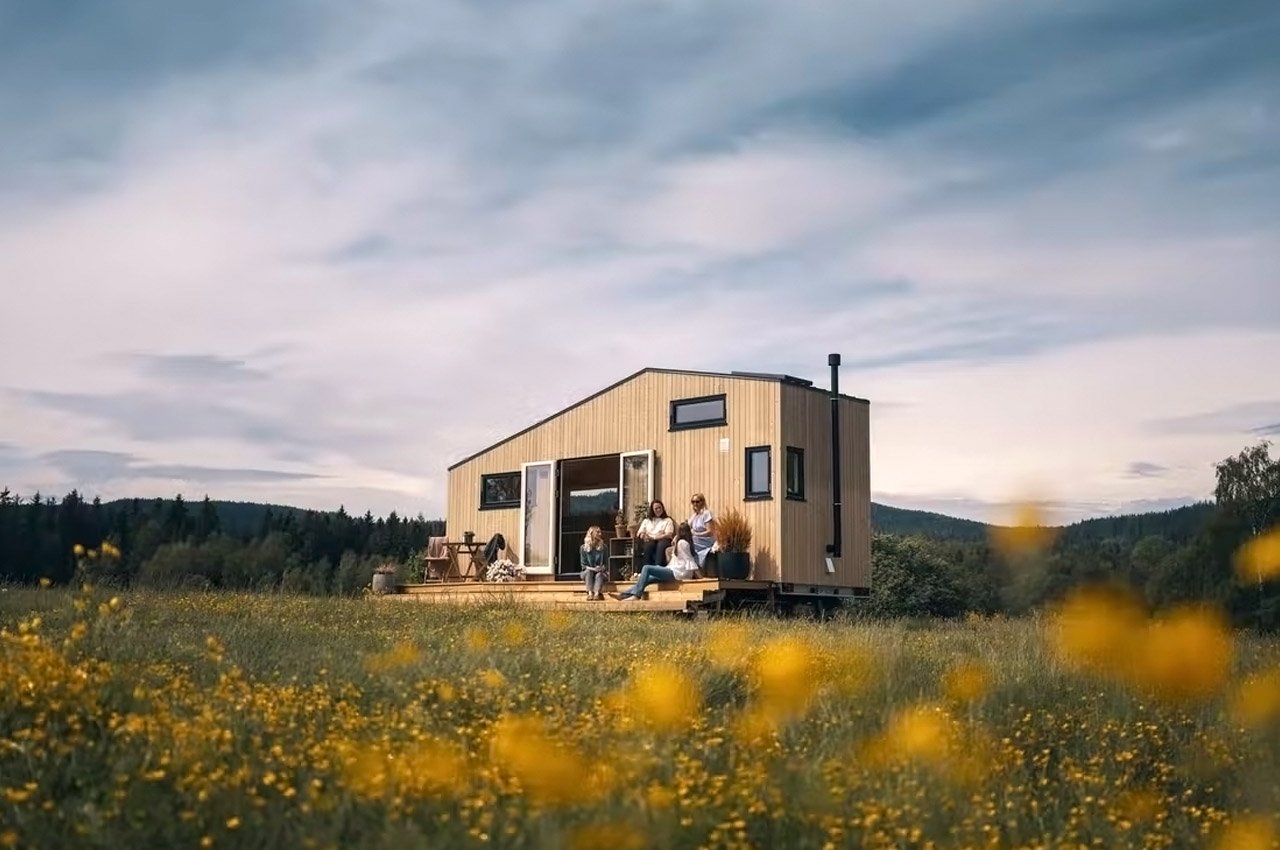

David and Jeanette Reiss-Andersen, cofounders of the Oslo-based tiny home company Norske Mikrohus, decided to build an eco-friendly and affordable alternative to the pricier standard-size homes available on the market.” We wanted to create something for people looking for a way out of the rental and mortgage markets—something for those who want easy access to nature and to live with fewer possessions,” said David. And their efforts led to the birth of ‘Tind’ – a beautiful wood-wrapped tiny home built in Norwegian style.
Why is it noteworthy?
Not only is Tind built from environmentally friendly Nordic materials, but it was also designed to withstand Nordic weather conditions. Tind was designed with one important goal in mind – to encourage flexibility and freedom. It’s a home you can move around in and take wherever you want to.
What we like
- Sustainable + eco-friendly
- Inspired by Norwegian aesthetics
What we dislike
- Measuring only 70 square feet, the home promotes a solitary lifestyle with no option to expand the space.
5. The Nokken Cabin


Called the Nokken Cabin, these prefab cabins can be purchased by anyone, but the designer duo has bigger plans for them. They want clusters of them to be placed in beautiful and remote locations to create “landscape hotels”, that can provide a luxurious glamping experience. You would be able to connect with nature and unwind, but in a comfortable and cozy space – without having to roughen it out basically.
Why is it noteworthy?
The Nokken Cabin was created for the purpose of expansion and was meant to be a pretty flexible structure. It can be used as a travel accommodation, a workspace, a retail element, a spa, a restaurant, or even as a simple home.
What we like
- A beautiful picture window in front of the bed provides surreal views of the landscape.
What we dislike
- While we love the minimal black structure, would be great if there was an optional open space/terrace space to better appreciate the surroundings
6. The Buck Mountain Cabin

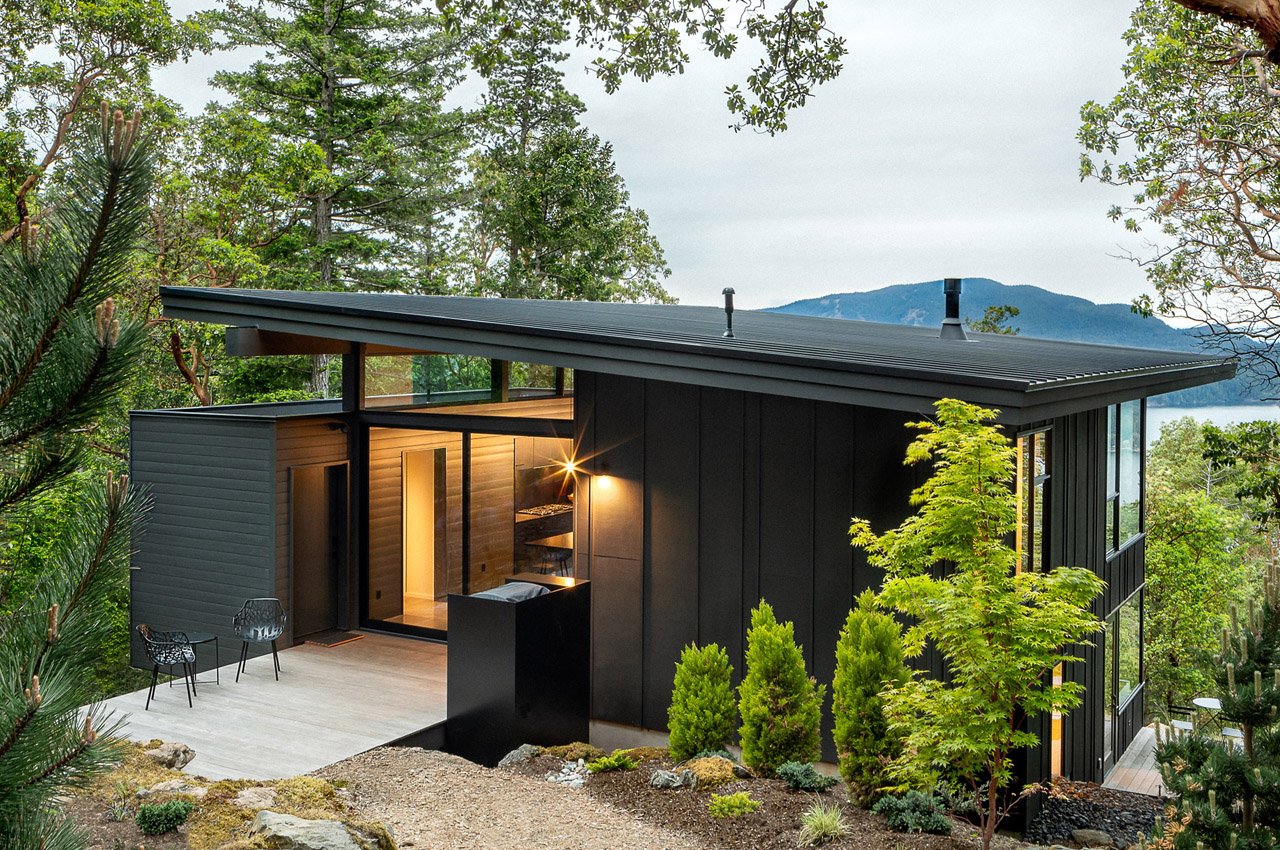
Situated on Orcas Island, which is a part of an archipelago called San Juan islands, is the Buck Mountain Cabin. The beautiful cedar-clad cabin was built by embracing the original site and its conditions, and by ensuring that minimal disturbance was caused to it. A steep grade and a narrow clearing created by a rock outcropping were a few of the challenges faced by the architects, but they encouraged the clients to focus on these features as they are unique to San Juan.
Why is it noteworthy?
The grassy basalt-rock outcroppings set within a Douglas fir and Pacific madrone forest were used to enhance and elevate the cabin. The east side of the 1527 square feet cabin is anchored to an outcrop, while the west side interestingly cantilevers over the entire site, almost 22 feet above the ground, and provides beautiful views of the surrounding landscape. The large trees around the site weren’t torn down which also ensured that the site was minimally disturbed. The addition of cantilevers, and point-load wooden columns with small footings helped this cause as well.
What we like
- Large protective overhangs and south-facing clearstory windows allow sunlight to generously stream in, especially during winter
- A stunning patio that floats over the site and can be accessed via a glass door
What we dislike
- The designers avoided precious or complicated materials and systems, taking away from the luxury element the interiors could have.
7. UHU
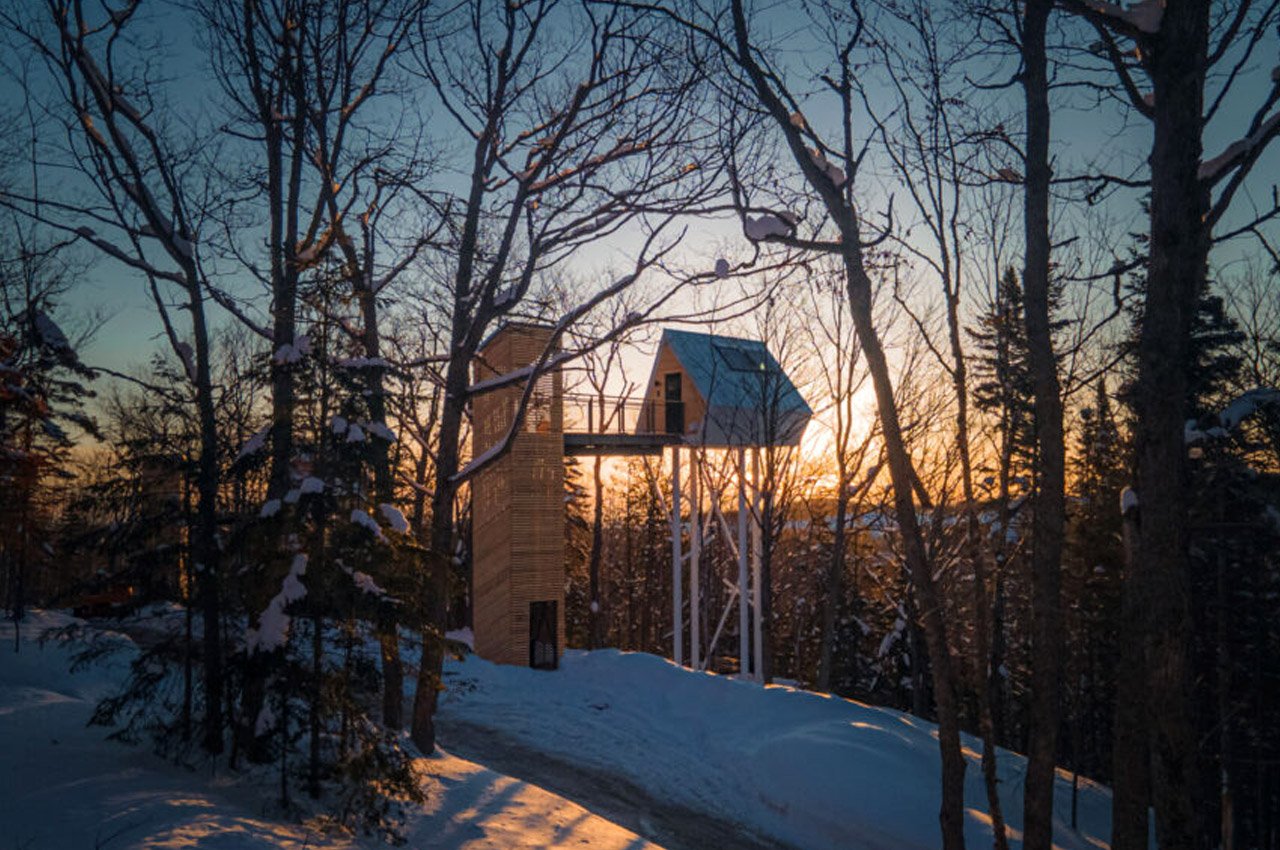
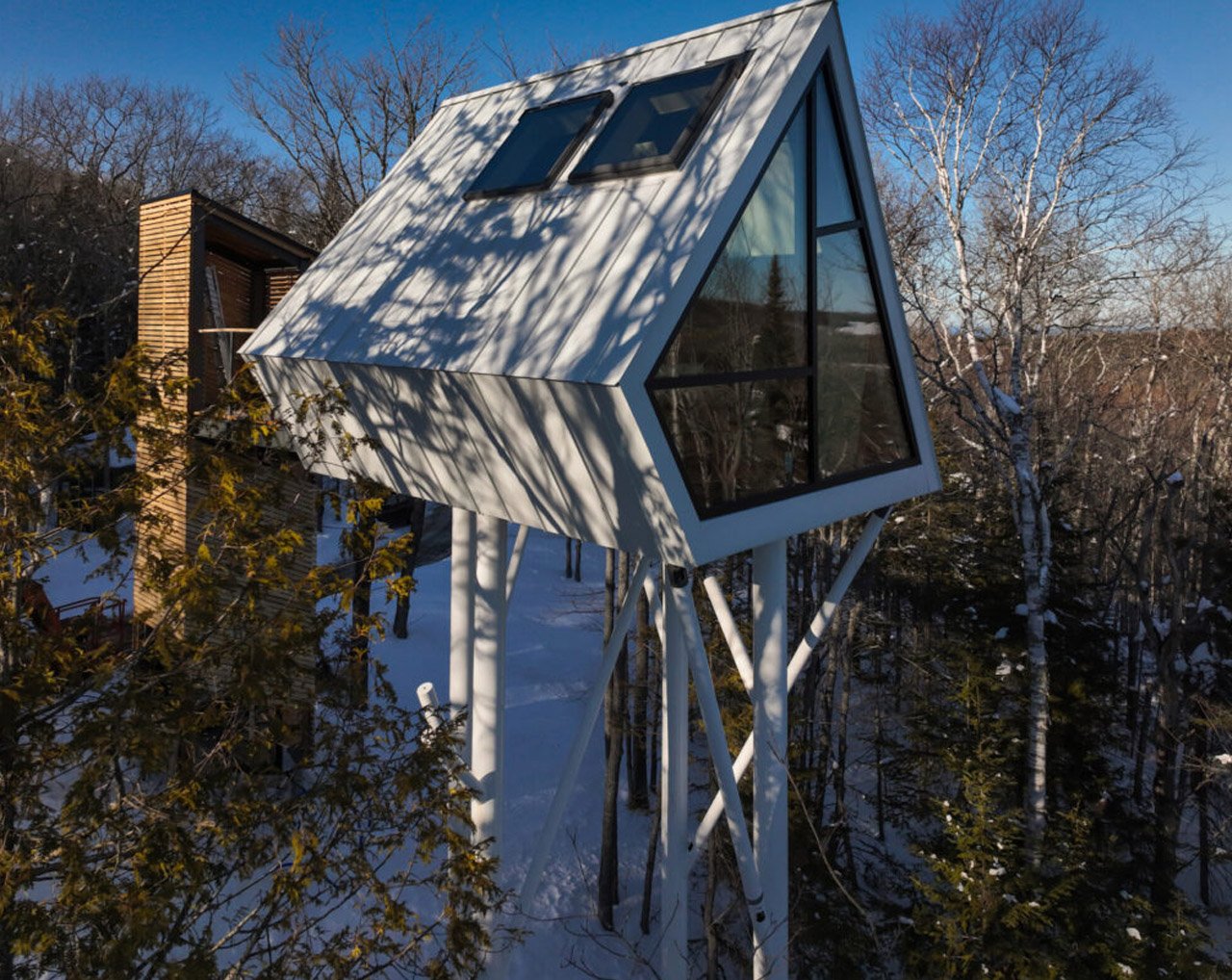
Located in the midst of a boreal forest, in the heart of Charlevoix, Canada is a tiny cabin raised on stilts called ‘UHU’. Quite literally translating to ‘owl’ in the Innu language, the UHU cabin is nested 12 meters in the air, with stunning views of the Saint-Laurence river to greet you every morning. Designed by Repère Boréal, UHU is the ultimate weekend getaway you’ve been searching for.
Why is it noteworthy?
The triangular cabin features a glazed facade which allows for generous views of the surrounding forest and green landscape. You can enter the cabin via an enclosed spiral staircase, and a 6-meter bridge. Although compact in size, the UHU cabin is equipped with all the amenities you need for a comfortable and cozy stay.
What we like
- Supported by stilts, allowing it to be comfortably positioned 12 meters in the air, so the views from within the cabin are going to be undoubtedly exquisite
What we dislike
- Can be considered an extremely tiny space especially for those who fear heights.
8. The Bali Rock House
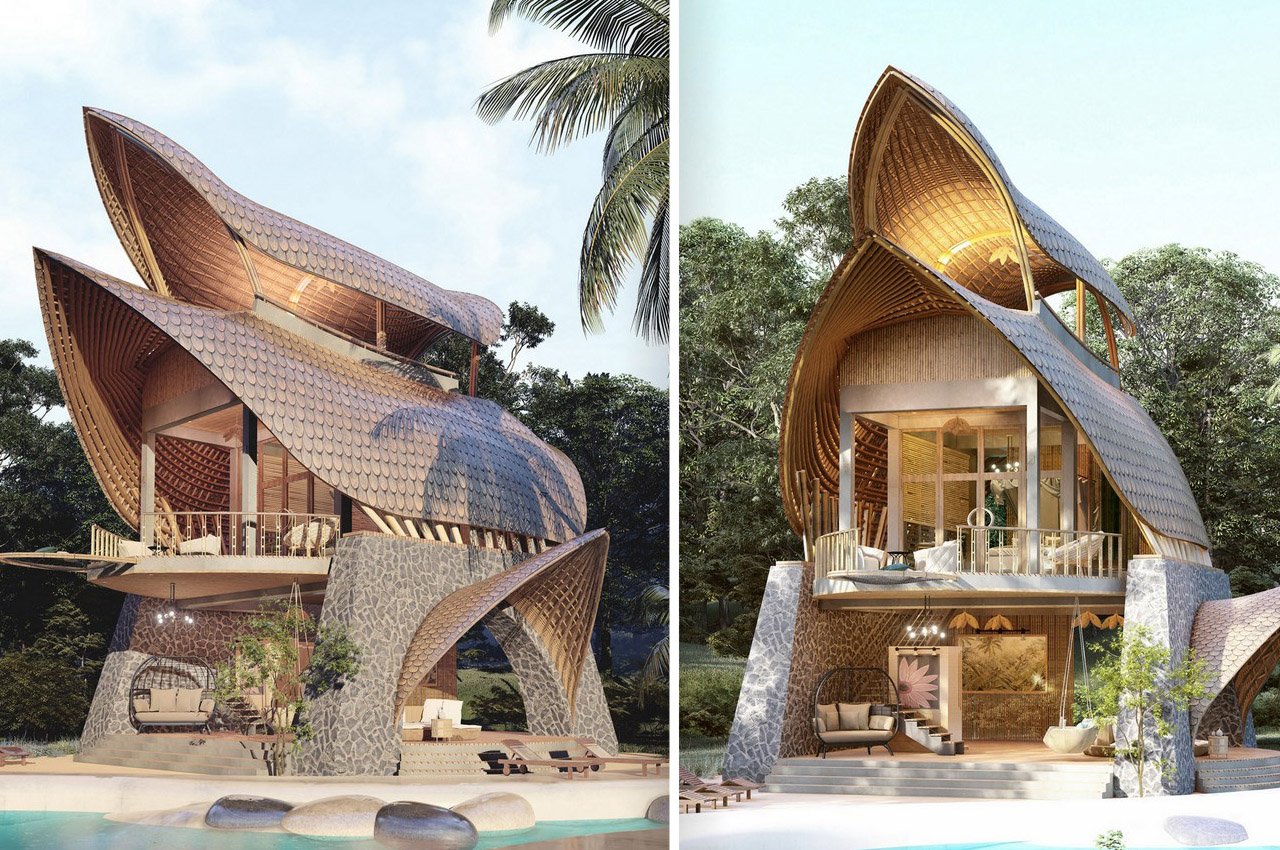

Bio-architect Thilina Liyanage just revealed plans for the Bali Rock House – a rather elvish-looking conceptual beach house with pointed roofs that draw equal inspiration from Thai architecture styles as well as medieval imaginary ‘gnomish’ homes. The Bai Rock House features a multi-storeyed construction with open living space on the lower floor, a terrace on the absolute top, and a rather quaint bedroom in between.
Why is it noteworthy?
The Bali Rock House is a mixture of multiple styles, but it sticks true to Liyanage’s organic approach and sheer avoidance of straight lines and concrete as a construction material. While the Sri Lanka-based architect often relies on materials like bamboo and wood to bring his ideas to life, the Bali Rock House (as its name rather aptly suggests) sits on a sturdy set of rock arches. The rest of the house uses bamboo and wood, although the rock foundation captures the eyes with its dominating presence.
What we like
- Features a terrace
- Ideal for glamping enthusiasts
What we dislike
- It’s still a concept, and we cannot see the real changes needed to design this concept.
9. The Chestnut House


Located in Vale Flor, Portugal, the Chestnut House is a minimal home designed by local architect João Mendes Ribeiro, centered around a chestnut tree. The glass walls of the home provide close-up views of the majestic tree, making it seem as if the tree is a part of the house.
Why is it noteworthy?
The home is clad in black-painted timber, and covered in plywood panels as well. It has also been lined with oriented strand board and cork panels for thermal insulation. The secular chestnut tree functioned as the motto for the development of the home.
What we like
- Impressive windows provide views of the tree’s massive trunk
- Developed around a tree
What we dislike
- While the glass currently separates the tree from the house, it would be great to see what happens if the tree could actually be a part pf the interiors.
10. Atri


Designed by a company called Naturvillan, Atri is a newly built A-frame villa located on the shores of Lake Vänern. The self-sustaining and climate-smart home is like a sustainable greenhouse in the middle of the mountains! It provides stunning views of the lake, as well as of the surrounding majestic trees, and a natural plot with rock slabs.
Why is it noteworthy?
It is A-shaped with a stable base directly on the mountain and has a continuous axis so you can see through the whole house in one view. As you look up the house blends in among the trees, becoming part of the natural landscape.
What we like
- Self-sustaining and sustainable
- Climate-smart
What we dislike
- The all glass exterior seems daunting and maybe difficult to maintain.
The post Top 10 cabins that nature lovers must visit first appeared on Yanko Design.

